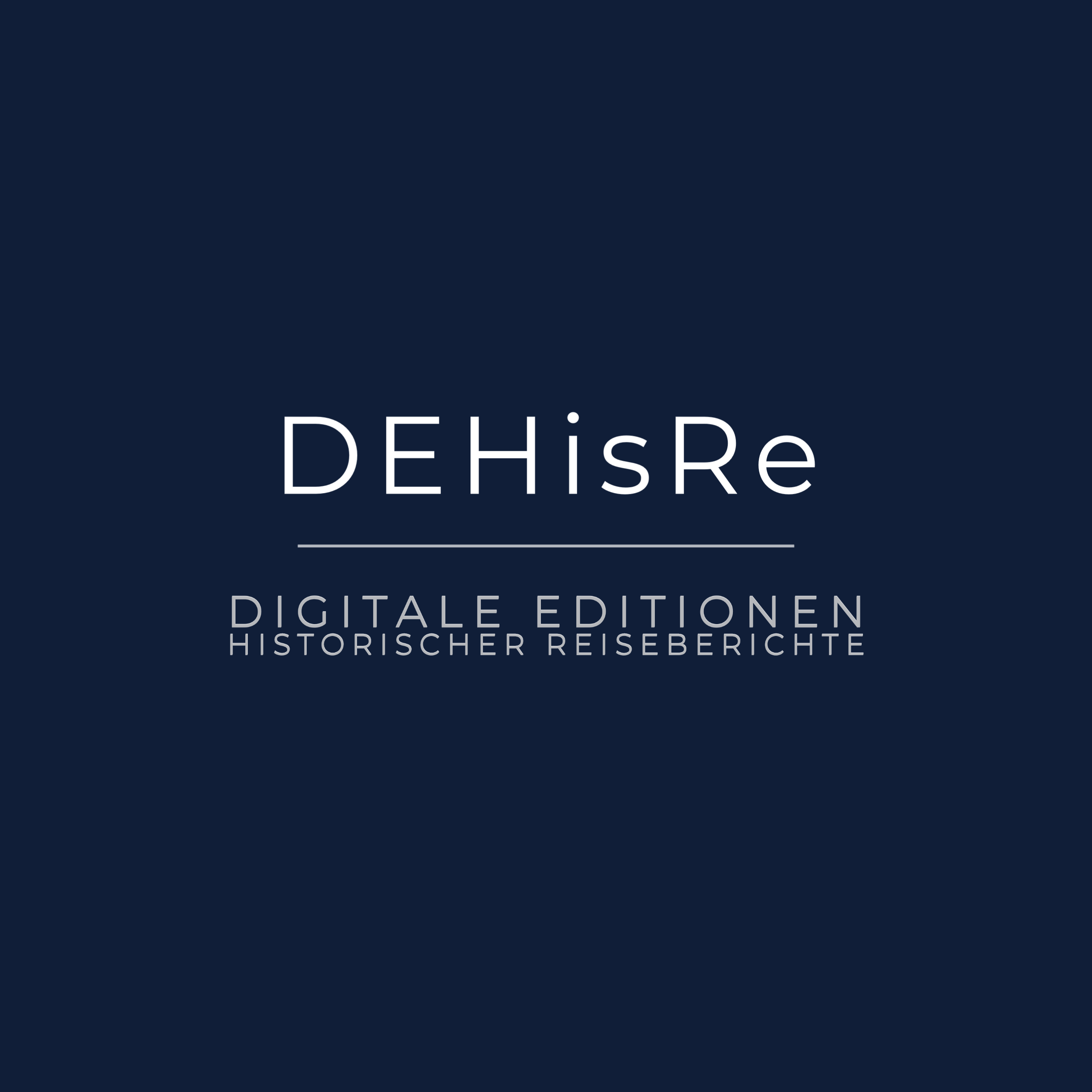Als erste Veröffentlichung präsentiert das DEHisRe-Projekt den Aufsatz von Hermann Beyer-Thoma, der im Rahmen eines Sammlbandes im Verlag der Russischen Nationalbibliothek in St. Peterburg im November 2021 erschienen ist:
Герман Байер-Тома, Путевые заметки в освещении новой методики цифровых гуманитарных наук (на примере путешествия Франца Ксаверия Броннера из Швейцарии в Казань в 1810 г.), in: Сперанская, Н. М. (Hrsg.): Российская наука в европейском контексте во второй половине XVIII – первой половине XIX века. К 250-летию со дня рождения Александра фон Гумбольдта и 190-летию его путешествия по России. Сборник научных трудов. Санкт-Петербург: РНБ, 2021, S. 146–166.

Diese Publikation geht auf eine Internationale Tagung zurück, die im November 2019 aus dem Anlass des 250. Geburtstages Alexander von Humboldt und des 190. Jahrestag seiner Russland-Expedition in der Handschriftenabteilung der Russischen Nationalbibliothek in St. Peterburg stattgefunden hat. Die Vorstellung der Reiseaufzeichnungen und der digitalen Instrumente ihrer Bearbeitung im Rahmen dieser Tagung leistete Hermann Beyer-Thoma eine wichtige Vorarbeit im Zusammenhang der Antragstellung des IOS.
Abstract
Hermann Beyer-Thoma
Travel notes viewed through the lens of digital humanities methods (Franz Xaver Bronner’s journey from Switzerland to Kazan in 1810)
In the “traditional” form of computer-generated text publishing, XML technology is used in a specialized version known as TEI, both of which, however, do not allow content analysis. For this purpose, the so-called ontologies have recently been used: systems based on the logic of a living language for structuring reality following the pattern of “subject–predicate–object”. Technically, ontologies are implemented in the form of interconnected tables. Subsequently, the collected information is subject to quantitative analysis and cartographic visualization. In its original form, the ontological analysis of travel notes has a bias towards the realities of travel, but appropriately completing the ontology it is also possible to accurately and reliably study cultural phenomena. The article presents the current project with preliminary results, primarily based on the geographical coordinates of a journey undertaken in 1810.
In accordance with the recommendations of travel reference books of the time, Bronner primarily paid attention to the road and to the purpose of the trip. The places and meetings with people mentioned in the narration are almost all connected with the journey from Switzerland to Russia. Frankfurt, Riga, Dorpat and St. Petersburg play a key role in establishing contacts and preparing for further travelling. Educated in monasteries and an autodidact in the region of Donauwerth, on the Danube, Eichstatt and Augsburg, after crossing the Russian border, Bronner begins to pay attention to university life, and to purposefully become involved in the orbit of Russian science. This strikes the reader’s eye, but digital methods allow not only to visually present the events, but also to confirm their relevance with numbers.



0 Kommentare